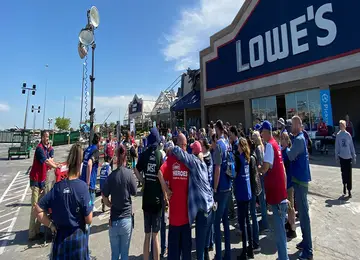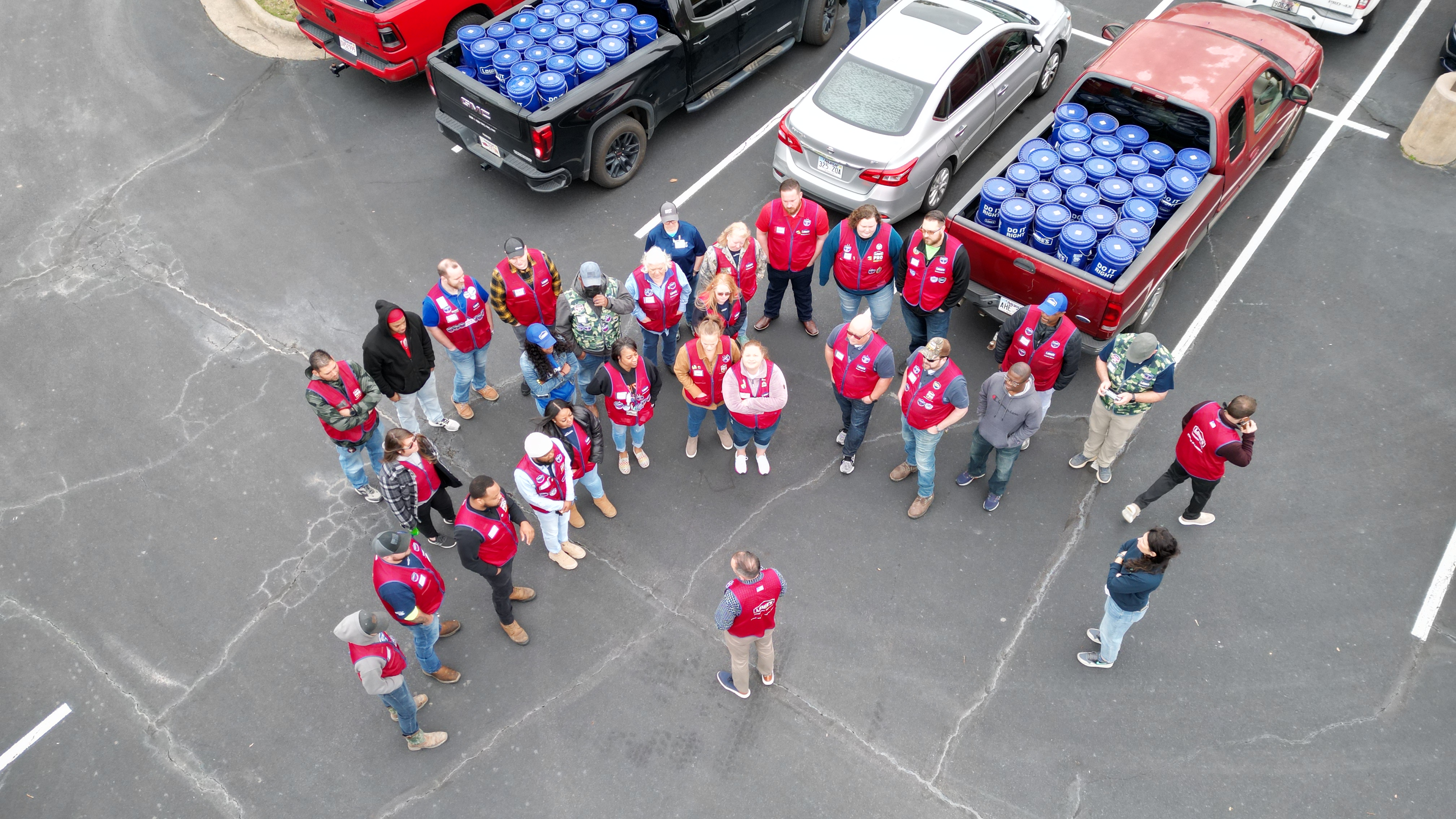Emergency Command Center and regional distribution centers work together to meet the needs of storm victims across the Southeast
Long before Hurricane Matthew began churning up the Florida coastline and residents began boarding up windows, Lowe’s teams were working 24/7 to prepare for the massive storm.
“Our main goal is to keep stores operating as normally as possible for as long as possible,” said a company spokesperson for Lowe’s Emergency Command Center in Wilkesboro, North Carolina. “Ahead of a storm like Hurricane Matthew, we’re doing everything we can to make sure our stores have the critical items people will need before, during and after the event.”
Lowe’s Command Center was created in 1989 in the wake of Hurricane Hugo, which caused more than $7 billion worth of damage in the U.S., according to the National Oceanic and Atmospheric Administration. During significant weather events, Command Center employees in Wilkesboro and down the road at Lowe’s headquarters in Mooresville essentially work around the clock to get critical supplies to stores.
While emergency relief supplies are prepositioned at Lowe’s stores in hurricane-prone communities, Command Center leaders recognized early on that Hurricane Matthew was going to threaten much of the Atlantic Coast and would require a significant response. They worked with vendors to ship products directly to stores and briefed Lowe’s coastal holding facilities and regional distribution centers across the Southeast to prepare for the storm.
During regular business operations, the coastal holding facility in Palmetto, Georgia, stages appliances that are shipped to 15 distribution centers nationwide, and then on to stores. However, when disaster strikes, Location Manager Cesar Guerrero and his 55 employees switch gears and work on getting relief supplies to impacted locations.
As a designated disaster relief storage facility, the 1.3-million-square-foot center reserves approximately 250,000 square feet of space just for emergency supplies. It maintains a constant supply of specialty pallets filled with generators, chain saws, gas cans, box fans, five-gallon buckets and other emergency products most often needed for tornadoes, hurricanes and floods. By staging the pre-packaged supplies year-round, the holding facility is able to get them onto trucks, and ultimately store shelves, much faster when a disaster is imminent and every hour counts.
“During times like this, we have dedicated employees who help us stay in operation to fulfill the need for the loads,” Guerrero said. “They know it’s going to make a difference in people’s lives. As long as the trailers keep arriving, we keep filling them.”
A few hours south at Lowe’s distribution center in Valdosta, Mike Jerome and his 825 employees worked just as quickly to make sure the impacted stores they serve in Florida and South Carolina had plenty of supplies, from “pre-storm” essentials like nails and plywood to immediate “post-storm” necessities like dehumidifiers and Shop-Vacs. Before the storm had even made landfall, Lowe’s distribution centers had already started shipping rebuilding materials like drywall to help customers who will be eager to begin recovery efforts once the storm passes.
“During times like this, we have dedicated employees who help us stay in operation to fulfill the need for the loads. They know it’s going to make a difference in people’s lives. As long as the trailers keep arriving, we keep filling them.”
— Location Manager Cesar Guerrero
“Our employees are always ready to step it up,” Jerome said. “They will serve to the best of their abilities because they understand the sense of urgency. There are folks out of their houses, coming to the stores begging for generators. They have to be taken care of. It’s a huge team effort that starts with the Command Center. They’re going off no sleep, fielding thousands of phone calls. And our employees in the stores are the ones that make it all go because they are face to face with our customers in these impacted areas. They are the heroes for our customers.”
By Sunday, Lowe’s had sent more than 400 truckloads of critical emergency supplies to areas in need.
“Our biggest responsibility is to be there to support communities and be a partner for people during their biggest time of need,” he said. “We know that when we have what people need – when they need it most – they remember, and trust that next time, whatever the event, they can count on Lowe’s.”




